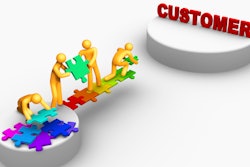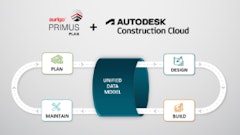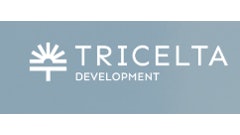Could the Gallup Organization be on to something that business managers should take serous note of? I think so! The Gallup Organization recently conducted research that identified the key factors that have strong predictive linkages to sustainable growth. They found that knowing how successful your company — and particularly your individual team — is at building customer engagement and how your success compares to that of your competitors is one of the most valuable pieces of information you can have.
It is not surprising that your company’s relationship with its customers, compared to the relationship your competitors have with their customers, has a lot to do with your future success. Yet traditional methods of evaluating customer relationships have had little predictive value. For example, Gallup believes that customer satisfaction data seems like it should be important, but in most cases, it isn’t. What Gallup notes is that your company’s customer satisfaction levels — and those of your competitors — probably look similar; both measures are probably between 75 percent and 80 percent. And, if you experience a steep decline in satisfaction levels, then you know you have a serious problem. But that usually doesn’t happen even when revenue is decreasing because customers often won’t tell us when we do something wrong so it is hard to predict the future. While the data is important, concentrating on a strong customer engagement plan is the key to growth.
Gallup’s research reinforces the need to have your company lead the way in customer service. Think about the standard of excellence in the Malcolm Baldrige National Quality Program. The Award focuses on two goals: delivering ever improving value to customers and overall organization performance. So how does your company stack up? Companies can grow their business by ensuring they build value in the following areas:
- Building Staff Loyalty
- It’s a fact that you can’t build strong customer loyalty with a staff that is in constant turnover.
- Firms with high levels of customer loyalty have also earned high levels of staff loyalty. Why? Because customers want to buy from people who know them and their preferences.
- Customer engagement comes when you serve your employees first so that they, in turn, can serve your customers.
- Knowing Your Level of Engagement
- In building customer engagement understand that not all customers are created equal. Some represent more long-term value to your firm than others.
- A smart company segments customers by value and monitors activities closely to ensure high-value customers are well taken care of.
- Remember that 80 percent of your revenue is being generated by 20 percent of your customers.
- Know what stage your customers are moving through in the sales process helps you build loyalty one step at a time. There are six stages in the sales cycle: suspect, prospect, first-time customer, repeat customer, client and advocate.
- If your customer relationship processes and programs aren’t moving customers forward, rethink them.
- Aggressively Seeking Out Customer Complaints
- Research says that companies never hear from 96 percent of their dissatisfied customers. For every complaint there are twenty-six more and six are serious. This often results in unpaid invoices, lack of courtesy to your frontline service reps and, above all, negative word of mouth.
- Satisfied customers spend 2.6 times more than somewhat satisfied customers and seventeen times more than dissatisfied customers so head off bad press before it happens. Make it easy for customers to complain, and treat complaints seriously. Establish firm guidelines regarding customer response time, reporting and trend analysis. Make employee complaint monitoring a key tool to build customer engagement.
- Knowing Your Customer’s Definition of Value
- Knowing how your customers experience value and then delivering on those terms is critical to building strong customer engagement.
- Knowing your customer’s definition of value is not easy, because your customers’ value definitions are constantly changing. Invest in research that enables you to understand, through the eyes of the customer, how well you deliver value.
- Winning Back Lost Customers
- Research shows that a business is twice as likely to successfully sell to a lost customer as to a new prospect. Yet, winning back lost customers is frequently the most overlooked source for incremental revenue in many firms.
- Why? Because most firms consider a lost customer a lost cause. With the average company losing 20 to 40 percent of its customers every year, it’s imperative that firms create hard-working strategies not only for acquisition and retention but also for win-back. Since no customer retention program can be 100 percent foolproof, it follows that every company needs a process for recapturing those high-value customers who depart. Think of it as loyalty insurance.
- Using Multiple Channels to Serve Customers
- Research suggests that customers who engage with a firm through multiple channels exhibit deeper loyalty than single-channel customers. This assumes that customers get the same consistent service whether coming into the store, logging on the Web site, calling a sales person or the service center, or dealing with accounting.
- To achieve consistency, ensure that every interaction with customers provides the same, consistent good service. Ensure you have allocated a budget, put top-notch people in charge and evaluate your plan regularly to ensure strong customer service and engagement.
- Training Frontline Employees
- Increasingly, for many companies, the employee “frontline” is a call center where service personnel interact with customers. These employees can be your “loyalty warriors.” Converged call centers that bring together multi-channel access points (phone, fax, e-mail, Web) are on the rise.
- This means that those employees need to be as equipped to write a well-written e-mail reply and navigate the company Web site as they are in being helpful and friendly on a phone call.
- Linking Your Data
- Most firms lack a 360-degree view of their customer because they have no centralized database. Billing departments, sales divisions and customer service centers might all have their own databases, with no effective means for creating a complete customer engagement profile.
Customer service, customer loyalty, customer engagement — call it what you may, but when it comes to growing your business it is mandatory to build a plan that positively impacts the customer.
Linda Hanson, CMC, is a certified management consultant and author of 10 Steps to Marketing Success. She writes, speaks and consults on marketing, management and customer service issues, and can be contacted at www.llhenterprises.com. Sign up for her free newsletter The Superior Performance Report.



















